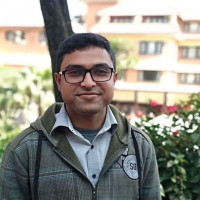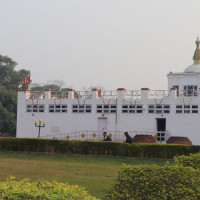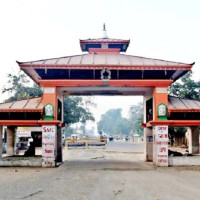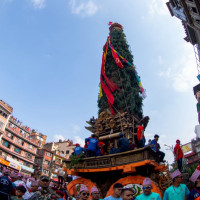- Sunday, 12 May 2024
Indrayani Jatra losing participation, charm
Kathmandu, Nov. 24: Dhalkomiyaa Nakha Wala, Paha Charhe Aa Hé Nyakegu Jula (Let the people of Dhalko rejoice because for them, Paha Charhe festival has arrived) is a cheer that has not been chanted for almost a generation.
Marking the beginning of the Indrayani Jatra, people used to almost sing this greeting while members of the local Manandhar community raised a 48-feet Yansi (ceremonial wooden pole) inside the Indrayani Temple complex at Dhalko, Kathmandu. However, it is a greeting that has not been extended for nearly half a century. Nor has the pole been raised.
These are aspects of the grand Indrayani Jatra, held for eight days every year around the time of Bala Chaturdashi, that have now been confined to stories, their accounts now beginning with the heart-piercing phrase ‘Once upon a time.’ And they are not the only ones.
“We have lost and, unfortunately, are continuing to lose many rituals of this festival,” said culture blogger Sandip Maharjan in a sombre voice. “The Aju Aji Dya is an example of this.”
Aju Aji was a tradition in which the Bajracharyas of Kwabahal, near Thahity, Kathmandu, used to bring their ancestral gods (Aju and Aji) in front of the Indrayani Temple during this Jatra that begins on the day of Marga Krishna Ekadashi in late November.
This was a demonstration of the unique bond present between Buddhism and Hinduism in the Kathmandu Valley. However, it does not exist anymore.
Similarly, Maharjan, 25, better known by his Webname Frannkey Franz, has also seen the tradition of Paa Pi Wonegu, in which men went to stand guard at the temple’s doors during the goddess’s secret puja, disappear during his lifetime.
In addition to being a blogger, Maharjan, is also an active participant in the Indrayani Jatra and this year, took part in the performance of the key Pran Fukaune puja in which the head of a sacrificed buffalo is symbolically brought back to life to be offered to the sacred fire on the day of Trayodashi.
But before we move forward, perhaps it would be in the interest of clarity to explore who Goddess Indrayani is and how her Jatra is celebrated.
As told by Maharjan, the story of Indrayani Jatra begins with a case of discrimination based on social class.
Despite being one of the eight mother goddesses of the valley and the daughter of Vatsala Maju (Bhuvaneshwori), one of the most powerful goddesses of the valley, Indrayani was poor and ostracised by her family.
As the story goes, one year, on the occasion of Paha Charhe, the 14th day of the dark fortnight of Chillā, the fifth month in the lunar Nepal Era calendar, Vatsala invited all her daughters for a feast. She served seven of them a lavish meal on golden plates but gave Indrayani and her children pieces of hard millet bread on leaf plates. And when Indrayani questioned why, she harassed and belittled her for being penurious.
This broke Indrayani’s heart, so she left without eating the food she had been so scornfully given. In tears, she began walking home. But her kids, being kids, began complaining that they were hungry and kept pestering her for food.
In distress, Indrayani could not handle the children’s cries. So, she left them at various spots along her way home.
By the time she reached Lagan, she was alone and distraught. This caught the attention of an old woman who gave her a pumpkin to eat. Indrayani accepted it and after reaching home, put it on the stove to cook. However, her hurting heart did not allow her to concentrate and she began crying again.
She cried the whole night, completely forgetting about the pumpkin.
The next morning, a smoke-filled house reminded her of the pepo still on the stove and she rushed into the kitchen. However, instead of finding a burnt mess, she found a pot full of gold. The pot was magical and, no matter how much gold Indrayani took out, it never emptied.
But she was not greedy. She took out the gold she felt she needed and then immersed the pot in the Bishnumati River for others to find, giving the waterway its colloquial name Lu Khusi.
Now rich with gold, she acquired the name Luti Ajima (Lu meaning gold in Nepal Bhasa). This made her family adore her and the next Paha Charhe, her mother gave her the best utensils and served her the best food. But she had not forgotten her mistreatment and instead of partaking in the extravagant feast, she removed her jewellery, placed it on the table and stood up.
“Your love is not for me but for my wealth,” she said. “So here, have these ornaments and leave me be. I want nothing to do with you.”
Saying this, she went back home and decided to hold a grand celebration four months before Paha Charhe without the presence of her mother or sisters.
“This celebration is what the Bala Charhe (Bala Chaturdashi) Indrayani Jatra is,” Maharjan shared.
In terms of history though, nobody knows who started the Indrayani Jatra and when, but many credit the Lichhavi ruler and founder of Kantipur city Gunakamdev with it.
“What we do know is that the festival used to be grander than it currently is,” stated Subik Manandhar, a musician associated with the Thahity Manandhar Guthi.
Along with Maharjans, Dongols, Mahanthas, Thaku Jujus and butchers, the Manandhars of the upper part of Kathmandu (Thane) play an integral role in managing the Jatra, which, this year, began on Saturday.
As mentioned, Indrayani Jatra is an eight-day fiesta with the first day, Ekadashi being the day for the Khapa Ti Wegu. This is when the doors of Indrayani’s temple are closed to prevent the family that disparaged her from coming in. They are only opened the following morning.
However, the festival begins in earnest on the Trayodashi day when the sacred idol of Indrayani is brought from her abode in Tyauda to the Dhalko temple on a palanquin. On this day, or rather night, a special Sarpahuti Yagya (snake-offering oblation) is performed on the temple premises. “This is a rare oblation performed only in a few other places like Sankhu and, once in a dozen years, in Thecho,” Maharjan informed.
The snake oblation is exactly what the name suggests – an oblation where a pair of snakes, along with two fish, sparrows and grasshoppers, need to be offered to the sacrificial flame.
A day later, on Chaturdashi, Indrayani is carried to Thahity on the palanquin where she meets her children – Swan Chhapu Ganesh, Bhudi Ganesh, Shova Bhagwati, Mankhacha and Jwalamai. All except the last two are brought from their respective temples.
On the new moon day Aunsi, Indrayani is taken around the city and gets to meet her consort Swet Bhairav at Chhetrapati. There was a time when Swet Bhairav accompanied Indrayani around the city in his own chariot, but that tradition died around 70 years ago.
There are scores of other rituals performed during the festival period, but these three are the ones that have suffered the most visible losses.
For instance, snakes are not always offered during the snake oblation these days. “This is because we cannot just offer any snakes. They have to be serpents found in specific fields at Chamati, Khusibu and other plots associated with Indrayani. But these fields don’t exist anymore,” stated Manandhar.
“Likewise, we have to hire porters to carry the palanquins because not enough people participate,” he added.
“The present condition is pitiful,” Maharjan said, without mincing his words. “We have a devoted group of locals trying to preserve the festival but many do not seem interested,” he lamented.
And this lack of interest, at least in part, is due to the knowledge that elders did not pass down, believed Narendra Malla.
Malla, 28, is a member of the Thaku Juju bloodline that, as told in his family, traces its origins to the mediaeval king Siddhi Narsingh Malla. Malla’s family has been living in Kathmandu since his grandfather migrated here from Pharping in his teens.
Before settling in Kathmandu, his grandfather, as a descendant of the erstwhile royals, used to officiate festivals in both Pharping and Kathmandu. Today, Malla’s family maintains a private trust that spends over Rs. 200,000 of personal money every year in organising the Luti Ajima Jatra.
“Our elders did not communicate the elements of this festival to us. That has made it hard for us to preserve them,” Malla said, recounting his own
experience of having to learn everything from scratch when he took over his grandfather’s duties after the latter’s death.
At the same time, Malla, like Manandhar and Maharjan, also sees a lack of public participation which he feels is due to a change in lifestyle. “Hardly anyone lives here anymore,” he said, presenting a sobering reality. “The people I grew up with are all abroad.”
“Those that are still here are also busy. They have work and offices and cannot make time for festivals.”
Could it be because many do not see the festival as important enough to make time for? “I don’t know,” Malla replied, followed by a silence that spoke louder than words perhaps could.













